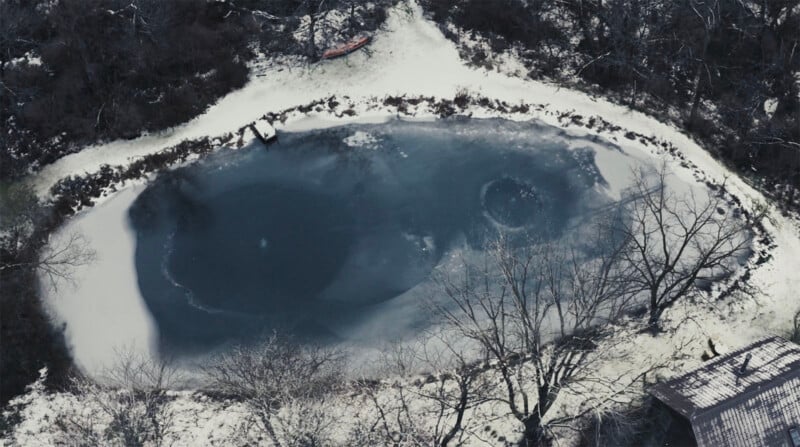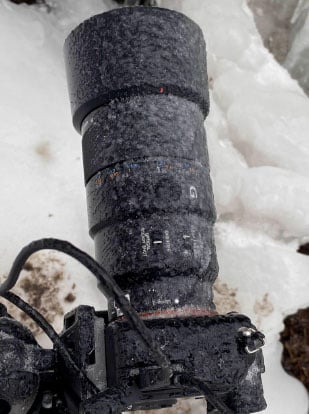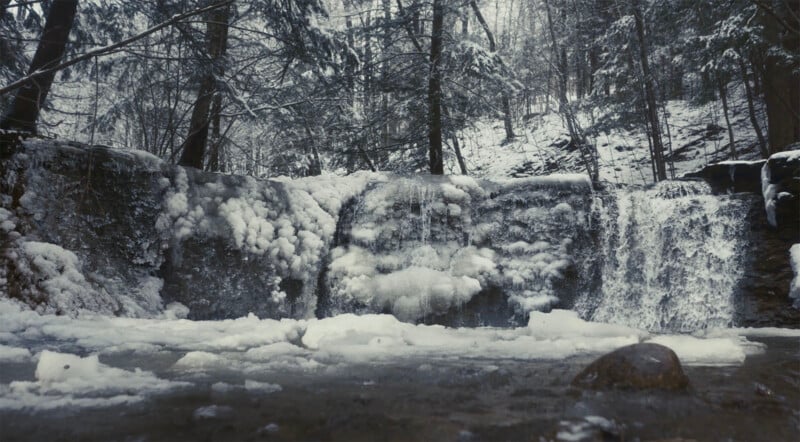Photographer Spends Five Years Shooting Winter Timelapse Movie
A photographer’s beautiful timelapse showing the onset of winter took him five years to shoot.
Jamie Scott shot Winter in upstate New York and Montreal, Canada. He employed drone shots to capture snowfall over large-scale areas; footage that was sometimes filmed years apart but cleverly edited to look consistent.

The project threw up many difficulties: Scott would see interesting things he wanted to shoot but it would be after the action occurred.
“For example, frost on windows, frost on cobwebs, and frozen waterfalls can create beautiful crystal-like formations, but they typically never happened twice in a row, which I needed to be able to plan the shot,” he explains.
Macro shots of leaves with frost were also a challenge because Scott had to focus for something that had not yet appeared, but he began to learn how certain objects freeze over.
“These elements can form in a matter of a few seconds to a few minutes,” he says.
“I learned that a large waterfall will slowly start to freeze over a number of weeks but the minute it turns to solid ice might happen within a few minutes.
“A lot of the best elements also happen in the middle of the night when it’s also the coldest outside. Needless to say, all of this combined created challenging conditions to get everything just right.”

The project meant Scott had to expose his camera equipment to the freezing temperatures, forcing him to take precautions.
“I had to keep the equipment dry and somewhat warm so it wouldn’t power off. In the snow I used plastic rain covers to keep the cameras dry. To keep snow off the lenses I used large fabric lens hoods,” he says.
“Cold weather drains batteries quickly, so I also strapped hand warmers to the equipment. In addition to the internal camera batteries, I also used external batteries to extend the life of the cameras.
“Sliders were also used for a lot of the shots so they all also needed the same treatment as the cameras. Unfortunately, I lost a lot of my external batteries over the course of the shoot as they eventually stopped working after being exposed to the cold for too long.”
![]()
The grueling timelapse meant leaving his cameras for “days and weeks” at a time. Scott and his partner made two weatherproof boxes to house the outdoor cameras complete with access panels at the back and a lens at the front.
“I also used additional light sources for lighting the shots at night. Although I could never simulate daylight they provided enough brightness to be able to expose correctly,” he adds.
Scott has a background in visual effects which he put to use in the editing process to give the film cohesiveness.
“Many of the shots were shot over several days so I had to even out the exposures and in some cases I had to transition from one day to the next,” he says.

Winter is set to a song by the composer Jim Perkins who collaborated with Scott and adapted the music as the film was created.
“Once we had established a basic structure to the piece we then built around that framework,” explains Perkins.
“The music has about 40 seconds of introduction before the violin arpeggio appears, which drives the piece forward. The piece then gradually builds, layering in new musical elements and taking away others to support the development of the visuals.
“As new musical elements were added, there was a lot of discussion around what worked and what didn’t, and all the decisions made helped bind the music and film together.”
The pair previously collaborated for another timelapse video entitled Spring.
More of Scott’s work can be found on his Instagram and website.